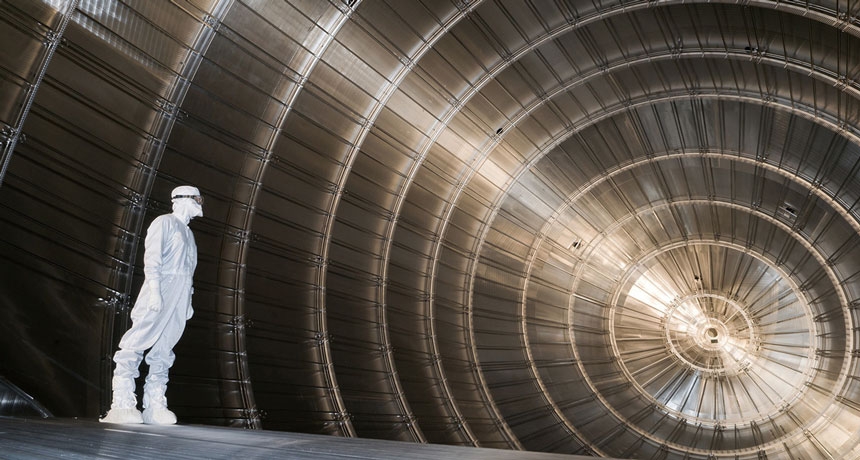Three new physics experiments could revamp the standard model

MASSIVE MACHINES A researcher stands in the cavernous spectrometer of KATRIN, an experiment in Germany to measure the mass of particles called neutrinos.
Physicists build giant machines to study tiny particles
BY EMILY CONOVER 9:30AM, SEPTEMBER 19, 2018
Diana Parno’s head swam when she first stepped inside the enormous, metallic vessel of the experiment KATRIN. Within the house-sized, oblong structure, everything was symmetrical, clean and blindingly shiny, says Parno, a physicist at Carnegie Mellon University in Pittsburgh. “It was incredibly disorienting.”
Now, electrons — thankfully immune to bouts of dizziness — traverse the inside of this zeppelin-shaped monstrosity located in Karlsruhe, Germany. Building the experiment took years and tens of millions of dollars. Why create such an extreme apparatus? It’s all part of a bid to measure the mass of itty-bitty subatomic particles known as neutrinos.
KATRIN, which is short for Karlsruhe Tritium Neutrino Experiment, started test runs in May. The experiment is part of a multipronged approach to the study of particle physics, one of dozens of detectors built in an assortment of odd-looking shapes and sizes. Their mission: dive deep into the standard model, particle physicists’ theory of the subatomic building blocks of matter — and maybe overthrow it.
See full text